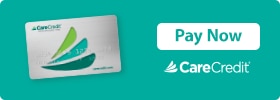Manage Your Back Pain With TENS Units

Transcutaneous electrical nerve stimulation (TENS) is the most common form of electrotherapy. If you’re among the 30 million or so Americans dealing with back pain, it’s a non-surgical treatment option that may provide enough relief to allow you to put off or forego surgery altogether. Dating back to the 1960s, the technology behind TENS units has evolved to the point where it’s even more conveniently accessible for patients wising to explore other forms of pain management before considering surgery.
How Do TENS Units Work?
Usually applied where the pain is being felt, TENS uses electrodes placed on sticky pads. The pads are attached to wires that goes to a battery-operated device. The treatment affects the nervous system by blocking pain signals sent by nerves with electrical impulses. Patients are able to control how much current is delivered with a handheld controller. Initially, the first session is typically done in a supervised setting to see how well a patient responds to the treatment. New handheld controllers are smaller and able to be worn discretely under clothing. Some devices are also wireless.
What Types of Back Pain Can Be Treated with Electrotherapy?
TENS units are usually recommended for patients with lower back pain or a pain source originating in the lower back that’s causing discomfort elsewhere. An example of this is sciatica, which refers to compression of the sciatic nerve that runs from the lower back into the legs. Conditions that often respond well to TENS treatments include:
- Non-specific lower back pain
- Lower back pain due to nerve compression
- Neck pain and stiffness
How Does TENS Help Manage Back Pain?
There isn’t much research positively proving the results some patients report experiencing with this form of electrotherapy. This is primarily due to the fact that it’s a subjective form of treatment, meaning that results depend on what’s being reported by patients. However, many patients do experience some degree of relief from TENS treatments. One of the reasons may be that, in addition to blocking nerve signals, the electrical impulses promote increased circulation to the affected area.
Patients experiencing relief from TENS treatments may be able to actively participate in physical therapy without distracting discomfort, which could also help ease pain by strengthening spine-supporting muscle groups. When properly used, TENS is considered a safe pain management option for many patients dealing with back pain. Like other forms of electrotherapy, it’s not meant as a first attempt at pain relief, nor does it treat the underlying source of back pain. However, if medications and remedies such as hot and ice applications aren’t effective, it’s an option worth considering.
Posted on behalf of Allied Pain & Spine Institute

